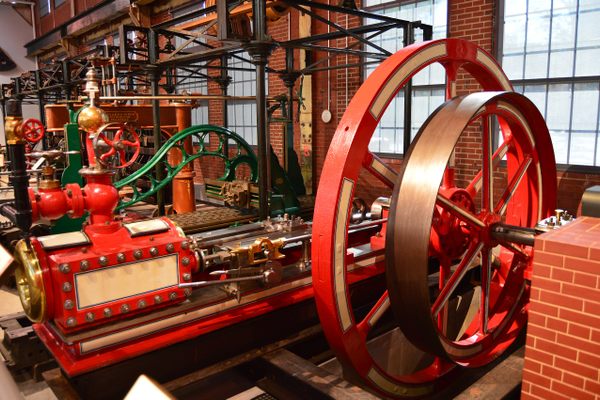About
The remains of seven beehive-shaped coke ovens can be seen in a coalfield in the County Durham village of Tow Law. Overgrown and in various states of dereliction, these domed brick and earthen ovens are rare remnants of a once-thriving industry, providing a fascinating insight into the historic art of coke production that became a major driver of England's Industrial Revolution.
Though only a few remain, there were originally more than 20 beehive coke ovens at the Inkerman Colliery in Tow Law, built in 1875. These were among the staggering 14,000 total ovens in the county at the time, producing over four million tons of coke each year to respond to the growing demand for smelt iron ore for steel.
Coke is a form of purified carbon fuel made by heating coal in the absence of air to drive off the volatile impurities, particularly sulfur. It was made in beehive-shaped brick ovens starting in the mid-19th century, which represented an improvement on the practice of partially burning coal in earth-covered open piles.
The beehive ovens were arranged in rows and covered with earth to act as heat insulation. In this simplified process, the coal was heated by setting fire to part of a charge placed in the domed ovens and then sealing them up to remove most of the oxygen. After the process was complete, the glowing coke would be removed with a metal peel, similar to those used in pizza ovens.
The beehive coke ovens were designed in the Durham coalfields and became characteristic of the region. But by the early 20th century, most coalfields in the U.K. had moved on to "recovery ovens," where the gas, tar, benzene, and ammonia byproducts generated could be recovered and sold instead of wasted. The beehive ovens at Inkerman went out of use by 1880, in favor of this more efficient and profitable innovation.
Today, the Inkerman site is one of the few places in Britain to see beehive coke ovens intact. The ruins are directly accessible as a protected English heritage area maintained by the county, and are accompanied by information boards. (One really interesting feature to note is the vitrification of the bricks by the intense heat generated in the ovens.) In addition to the ruins, there are two well-preserved beehive ovens at the site, which stand almost completely intact. These are located on adjacent private land, but can still be seen clearly from the heritage site.
Related Tags
Know Before You Go
The coke ovens are located along Inkerman Road about a mile north of Tow Law. They are marked with a sign and you can park right next to the gate. (In wet weather, the entrance is very muddy.) Admission is free. The two remarkably well-preserved ovens are located on private land next to the heritage area, but can be seen from the public site and may be visited with permission.
Published
February 15, 2019




























